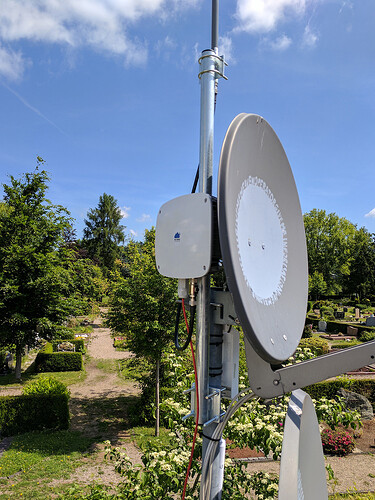your gateway can NOT be destroyed by a node or a GSM transmitting even very close to the antenna.
But static charge built-up can , so make sure you are using a DC grounded antenna.
You can check this very simply, using your Ohm-meter, you should see a short circuit between the ground and the RF pin your antenna cable connector.
A note on lightning protection from Slack today:
@Caspar [12:50 PM]
uploaded this image:
@jmarcelino [1:22 PM]
what’s that big metal thing on the n connector? surge protector?
@Caspar [1:31 PM]
Lightning Protection, missing the cable to earth atm… - http://varia-store.com/Accessories/Lightning-Protection/Lightning-protection-5-6GHz/Lightning-Protection-N-Plug-N-Socket-Bulkhead-5-6GHz::255.html
@jmarcelino [1:50 PM]
Thanks. Always bern suspicious of those gizmos, just doesn’t seem possible they’d do much
Ligtning protection does not stop with an lightning protection at the antenna. Protection shall be insatlled to the (UTP) cables at the mast and before entering the building. Lightning protection shall be connected to a proper ground for the purpose of protecting the building from lightning. Wthout is is of no use.
You are right @pe1mew, i am missing the connection to ground atm on the photo. To protect the ethernet wires i use those (before the cable enters my building): https://www.ubnt.com/accessories/ethernet-surge-protector/ and the mast was connected to ground (from my electrician) already.
Sounds perfect!
Nearby lightning discharge and a LoRaWAN gateway. Ain’t the best combination 
Because I wasn’t at home when a major thunderstorm hit the Netherlands on 9 august 2018 I couldn’t shutdown my Lorank8 gateway and disconnect the antenne before the storm hit Almelo (ok, shutdown was possible by SSH but disconnecting a antenna is a physical thing).
From my work I monitored my TTN Enviromental map for the storm to hit and saw the sudden rise in humidity and drop of the temperature when the storm hit my home as you can see in the image below (timestamps are in UTC). But also a major drop of 16dB on the RSSI (link).
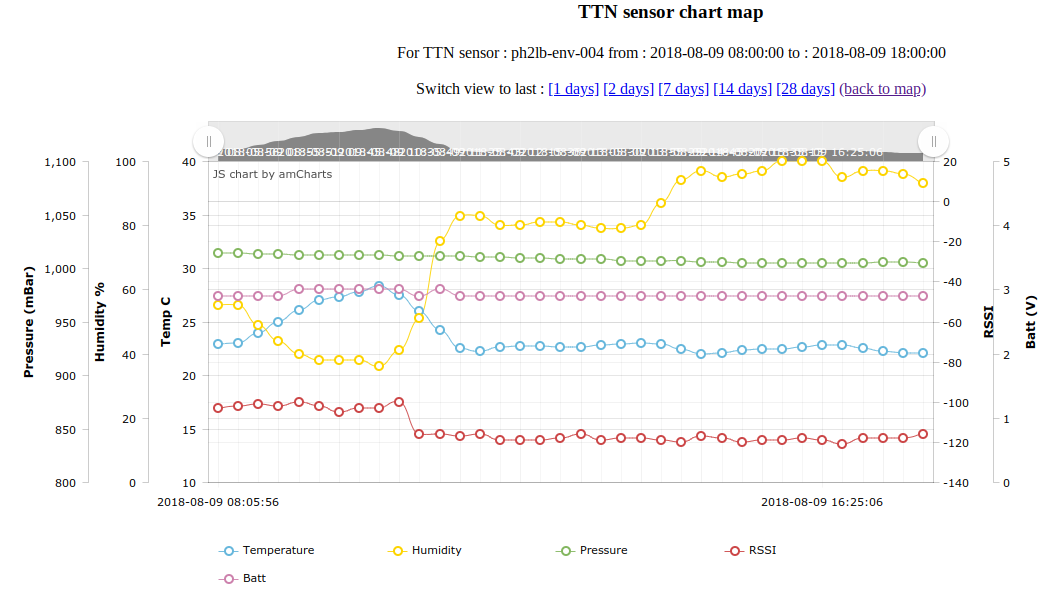
Because of the large amount of rain in that store I hoped that the antenna or cable had some water damage and after some cleaning this problem would be fixed. But measering the antenna and cable which seemd ok, I changed the antenna and cable just to be sure. But no increase of RSSI was to be seen. So I feared that the RX part of my gateway would have been damages by a nearby lightning discharge.
Early Juli 2018 I was asked by Wietse (who lives in my area) for some support on his graduation assignment involving a LoRaWAN case. He also told me that he is very interested in weather monitoring and had a professional weather monitoring system incl a professional lightning detector who sends data to a central server. So when I told him about my findings he was willing to search data for a lightning map of 9 august 2018 and send me a animated GIF of that day. He also told me that a had some discharges to close for comfort near my home and so the location where the LoRank8 gateway is installed.
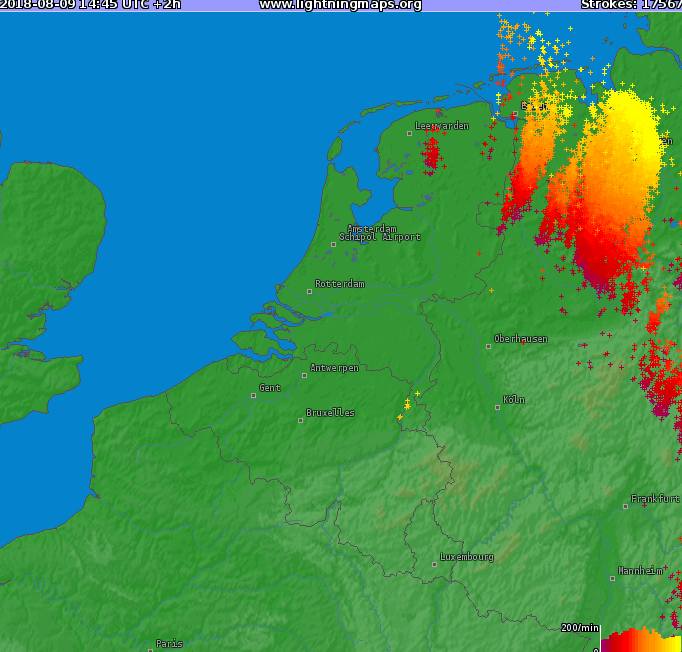
Confirming my fear that a nearby lightning discharge has probably damaged the RX part of my LoRank8 gateway. The only thing I could do now is to buy a new RF board for my Lorank8. A thing my wallet ain’t gona like. 
Also posted on my website : http://www.ph2lb.nl/blog/index.php?page=nearby-lightning
It seems persisting the RSSI is a great way to prove the damage to one’s insurance. (Though in The Netherlands not all will cover induction.)
As was going to look in that, I believe that they cover it.
But there is a things “eigen risico” (Deductible).
One of my new years resolutions was to replace the “deaf” concentrator board of my Lorank8 gateway. Today it got delivered and so it was time to install the new board (and a N-N female Coax lightning protector).
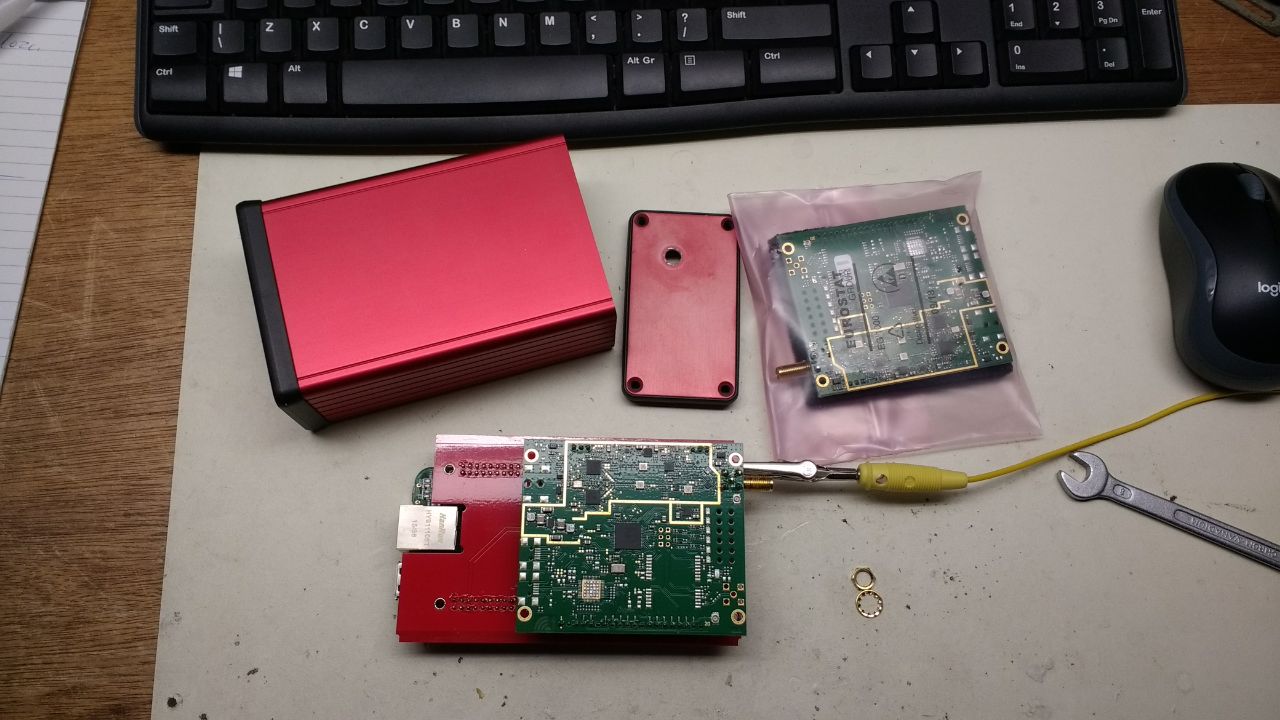
And the proof of the pudding is in the tasting, so waiting for a new sample to get in and take a look what the RSSI has done.
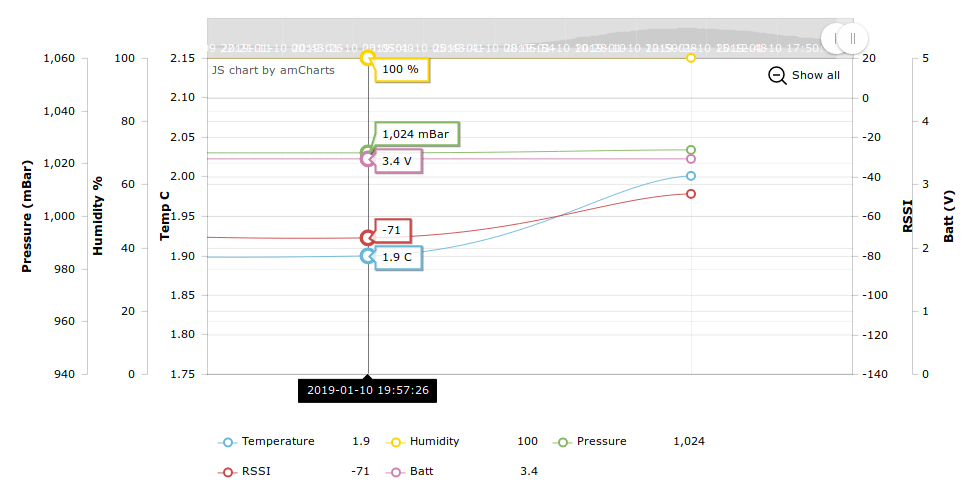
And the RSSI had restored to it’s old level (after the nearby lightning strike it dropped 22 dB on my nearby nodes).
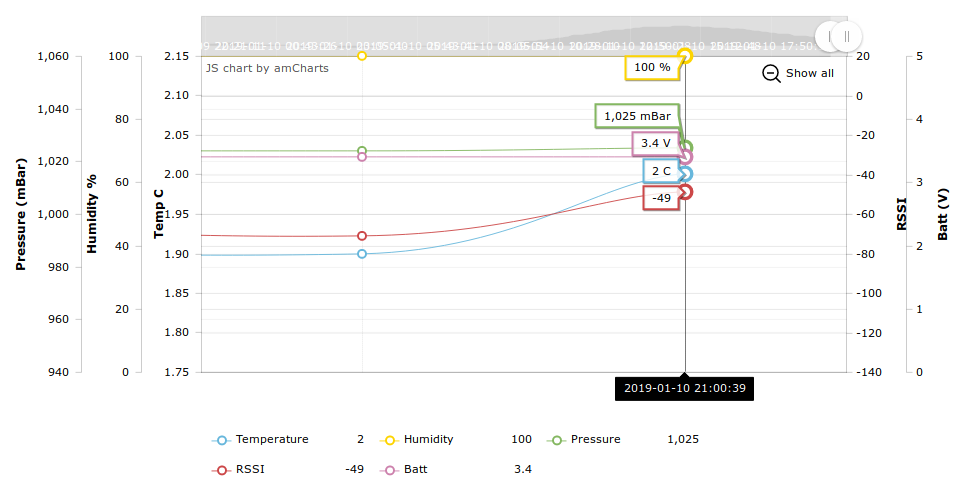
So when everything is ok, the northern part of Almelo should have it old coverage again. 
you have a link for that ? ![]()
That I do have for you : https://webshop.ideetron.nl/Webwinkel-Product-202254817/N-N-female-Coax-bliksembeveiliging.html
I still have to install in outside (you don’t want one installed inhouse) and hook it up to a separate earth pin (damn dutch rain). And I don’ t have the illusion that it will help with a direct hit, but luckily I have some large buildings around my house with professional lightning safety installation (those telecom guy know how to spend money). But I hope that It will suppress the static charges what you get from a nearby hit. Time will tell.
tnx… I have to order one after your story 
Me too! (N-Type) plus anyone know of good source of SMA versions?! 
These kind of lightningprotectors will guard your house against a nearby/direct hit, but te RF-components would probably still get defect. Better is to use a multi stage surge protection device. But these things are more expensive than a concentrator board. 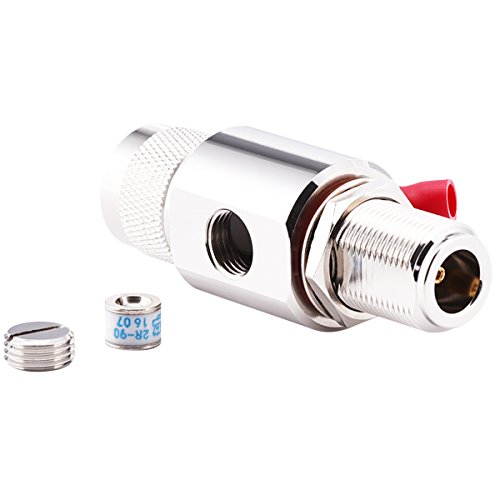
versus (Polyphaser DGXZ+06NFNF-A)
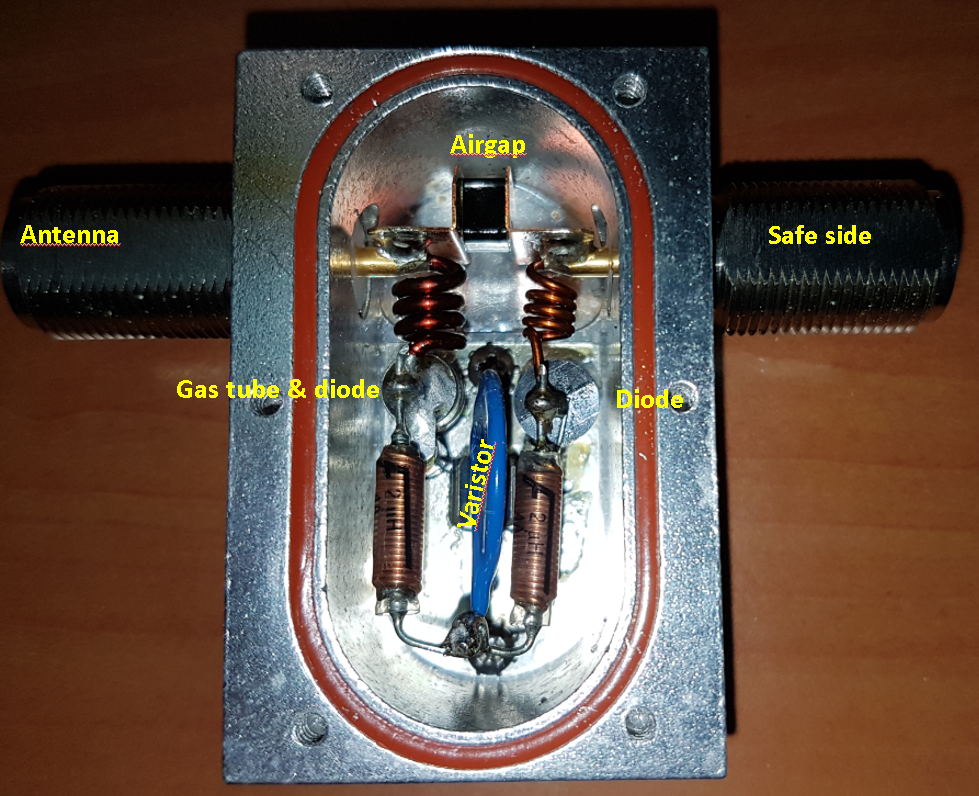
This one was also linked earlier in this post…
https://varia-store.com/de/produkt/31415-alfa-network-alr06-blitzschutz-n-buchse-auf-n-stecker.html
forget lightining arresters. is it strikes direct or indirect your GW is broken. . beter is to prevent the lightning getting inside with shielded UTP and connect the outside eath with a special earthigkit to the buidlings earth.
as an example 
Joost .
How often have you been hit by a lightning strike in the last 5 years?
Hmm, so it is about time we will get hit…
Anyway, if you’re afraid of getting your network fried, you can also isolate your gateway by using wifi.
Still you need to power it though.
By the way, I had once my entire network fried by lightning.
It was while I was a student at university. We had a network throughout our entire flat, covering 10 floors. So there was this cable dangling outside the balconies from the 11th to the 2nd floor.
At about 10 meters distance from it there was this lightning deflector cable mounted parallel to it.
During a thunderstorm the lightning strikes our flat (trust me you will know when that happens!) and the deflector works just fine as designed.
The next morning we could replace all network cards and all hubs. (and some of the telephone modems)
But miraculously those were the only things that had to be replaced. All else survived.
This was in 1999, so a good reason to upgrade to 100 Mbps from 10 Mbps and also the computers were Pentuim or Pentuim-II.
On the other hand, if you have had lightning strike and you’re not in a 12-floor flat, then I do have the feeling you may see strikes more often as does a specific house near my parents where lightning strikes a few times per decade. It appears that house is built right at the point where 3 kinds of soil meet + it is at a “local minimum” of a hill slope and that may do something to thunderstorms.
Humm sounds like you should move to a less electrifying spot,
or at least move your gateway somewhere else 
quit often. i work in the telecom industry and all kabels and devices indoor and outdoor are “grounded” and when lightning strikes all energy is been diverted to the ground. if the MT GW will survive that is open to debate. it is made out of plastic and RF open. time will tell. enclosing the unit in a metal enclousure wil be the beter option. the 2ghz wlan is then useless.
Joost .
